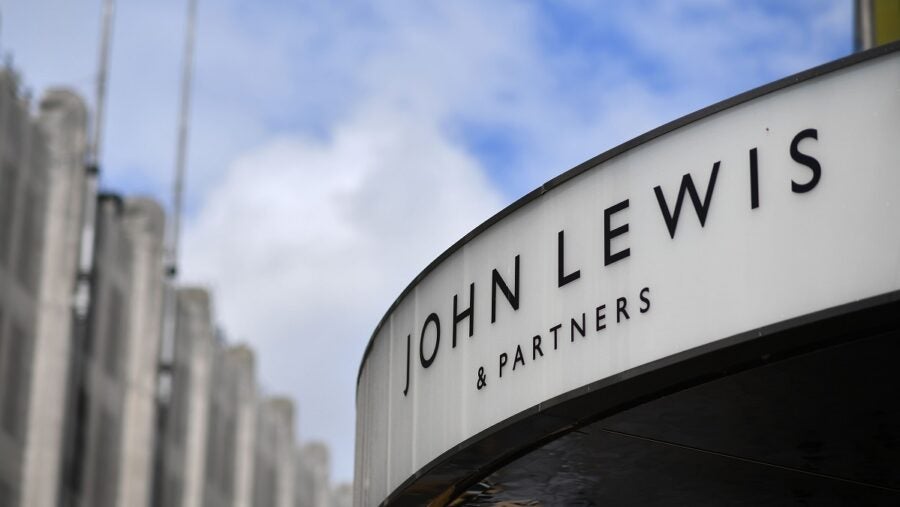
This time last year, John Lewis was preparing to screen the latest in a series of adverts that have become an integral part of the Christmas countdown for many British consumers. Abandoning the whimsical magic realism displayed by most of its predecessors, this commercial told a grittier story than normal: that of foster parents getting ready to take on a new child.
Dame Sharon White, chair of the John Lewis Partnership, who recently revealed plans to step down in 2025, says that the subject matter made the ad a “very unusual one” for the business. Its objective, apart from the obvious goal of getting everyone talking about the brand during the most crucial quarter for retailers, was to publicise the launch of its Building Happier Futures programme, which helps young care leavers into work.
John Lewis has hired 22 people via the scheme since then and has just released a product line, called Made With Care, that features the designs of several care leavers. All profits earned by this new lifestyle brand will be reinvested into the programme.
We want to persuade other businesses that young people brought up in care have the talent to succeed in the workplace
Explaining why John Lewis wanted to target care leavers in particular, White says: “It really comes back to the historic values of the partnership. We’ve always looked for places in which the state isn‘t doing a great job and where we can help. Thousands of young people have come through the care system and their amazing talents aren‘t always recognised.”
There are just over 82,000 children in care in England, more than a third of whom will leave it on their 18th birthday, according to the charity Become. From that point, the vast majority will receive no further formal assistance. This sudden loss of support – widely referred to as the care cliff – and the implicit assumption that a young person can become independent overnight, can seriously harm care leavers’ career prospects. Statistics published by the Department for Education in 2019 revealed that 39% of care leavers aged 19 to 21 in England were not in employment, education or training, compared with 12% of all people in that age group.
“The transition into work for this group is not always straightforward, because your support stops when you turn 18,” White says. “So we felt that the partnership could take some steps to provide the jobs and skills that these young people need.”

Why recruiters should target under-trawled talent pools
White was inspired by the work of the Timpson Group, which has long held a policy of hiring ex-offenders. She believes that employers have an ethical duty to make their recruitment practices more inclusive and help people from disadvantaged groups into employment.
“We want to persuade other businesses that young people who’ve been brought up in care have the talent to succeed in the workplace,” White says.
A UK labour market in which vacancies have far outnumbered jobseekers over the past two years has certainly induced more employers to target previously overlooked sectors of society when recruiting.
Catering company Social Pantry aims for 10% of its workforce to have been through the justice system, for instance, while recruitment giant Hays is working to help military veterans find employment. And several firms, including easyJet, Halfords and Axa, have made concerted efforts to encourage older workers out of retirement.
There is also a growing recognition among employers of the qualities that such recruits have to offer them.
“We’ve found that the young people who’ve come to work in the partnership have shown a phenomenal commitment to work,” White reports. “They have great creativity, agility, resilience and imagination. Retention levels have also been fantastic.”
Overcoming challenges in hiring care leavers
Building Happier Futures hasn‘t been completely plain sailing. White admits that John Lewis initially “underestimated” the amount of training that those managing its scheme members would need.
“How you support the manager of the young person is super-important,” she stresses.
Some colleagues became so upset on learning about the harrowing experiences some of the care leavers had endured that John Lewis had to introduce specialist trauma training for managers. About 300 people have undergone this so far.
Care-experienced people can be incredibly overlooked
While White acknowledges that the extra costs involved in providing enhanced support of this nature might deter some firms from hiring people such as care leavers, she is convinced that the benefits far outweigh them.
Michael Archibald is a care leaver and aspiring artist who designed the first product in the Made With Care range: a tote bag. He observes that “care-experienced people can be incredibly overlooked. If you just give them the same platform and level the playing field, they can show you their passion and determination.”
John Lewis’s experience so far is a clear sign that doing so can pay dividends for both parties.

This time last year, John Lewis was preparing to screen the latest in a series of adverts that have become an integral part of the Christmas countdown for many British consumers. Abandoning the whimsical magic realism displayed by most of its predecessors, this commercial told a grittier story than normal: that of foster parents getting ready to take on a new child.
Dame Sharon White, chair of the John Lewis Partnership, who recently revealed plans to step down in 2025, says that the subject matter made the ad a “very unusual one” for the business. Its objective, apart from the obvious goal of getting everyone talking about the brand during the most crucial quarter for retailers, was to publicise the launch of its Building Happier Futures programme, which helps young care leavers into work.
John Lewis has hired 22 people via the scheme since then and has just released a product line, called Made With Care, that features the designs of several care leavers. All profits earned by this new lifestyle brand will be reinvested into the programme.
